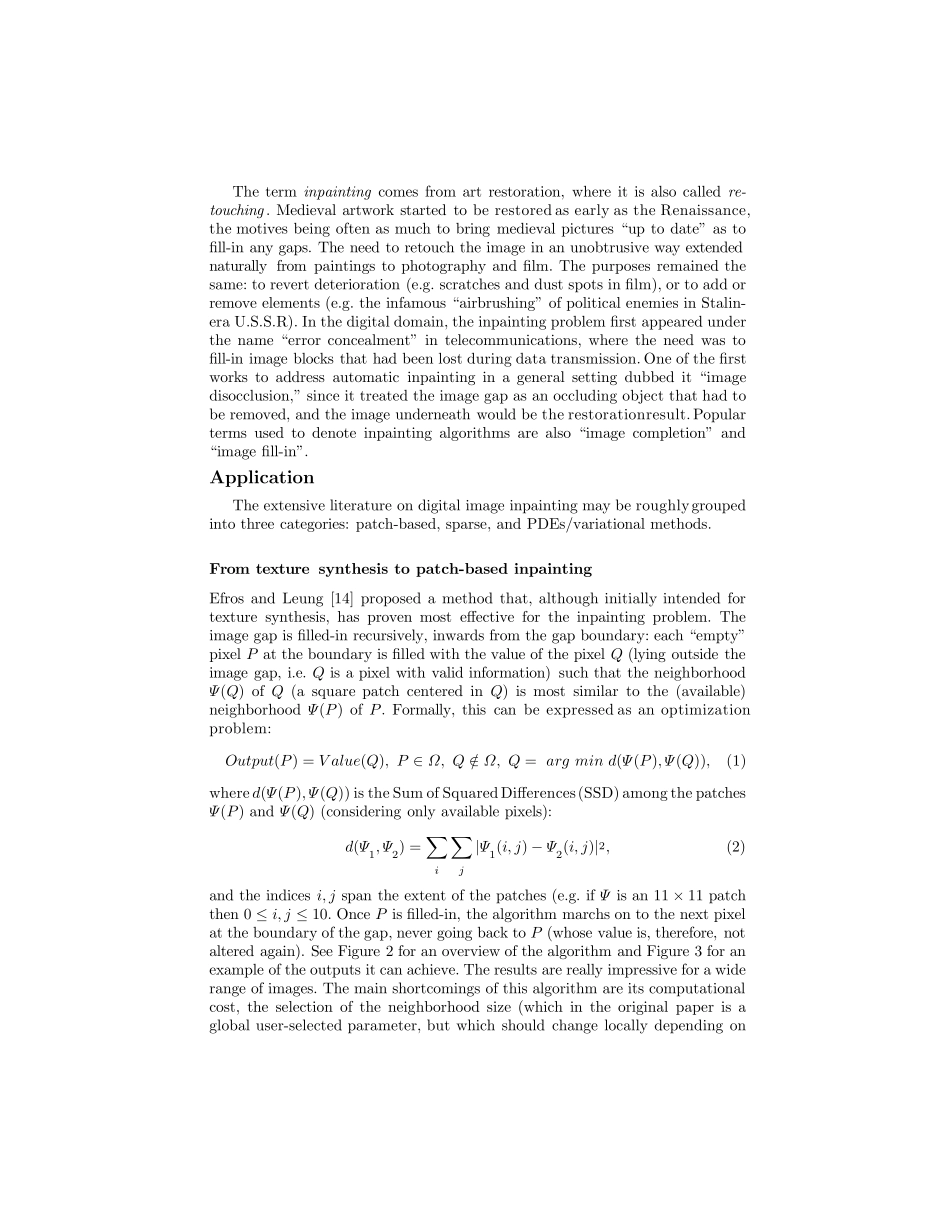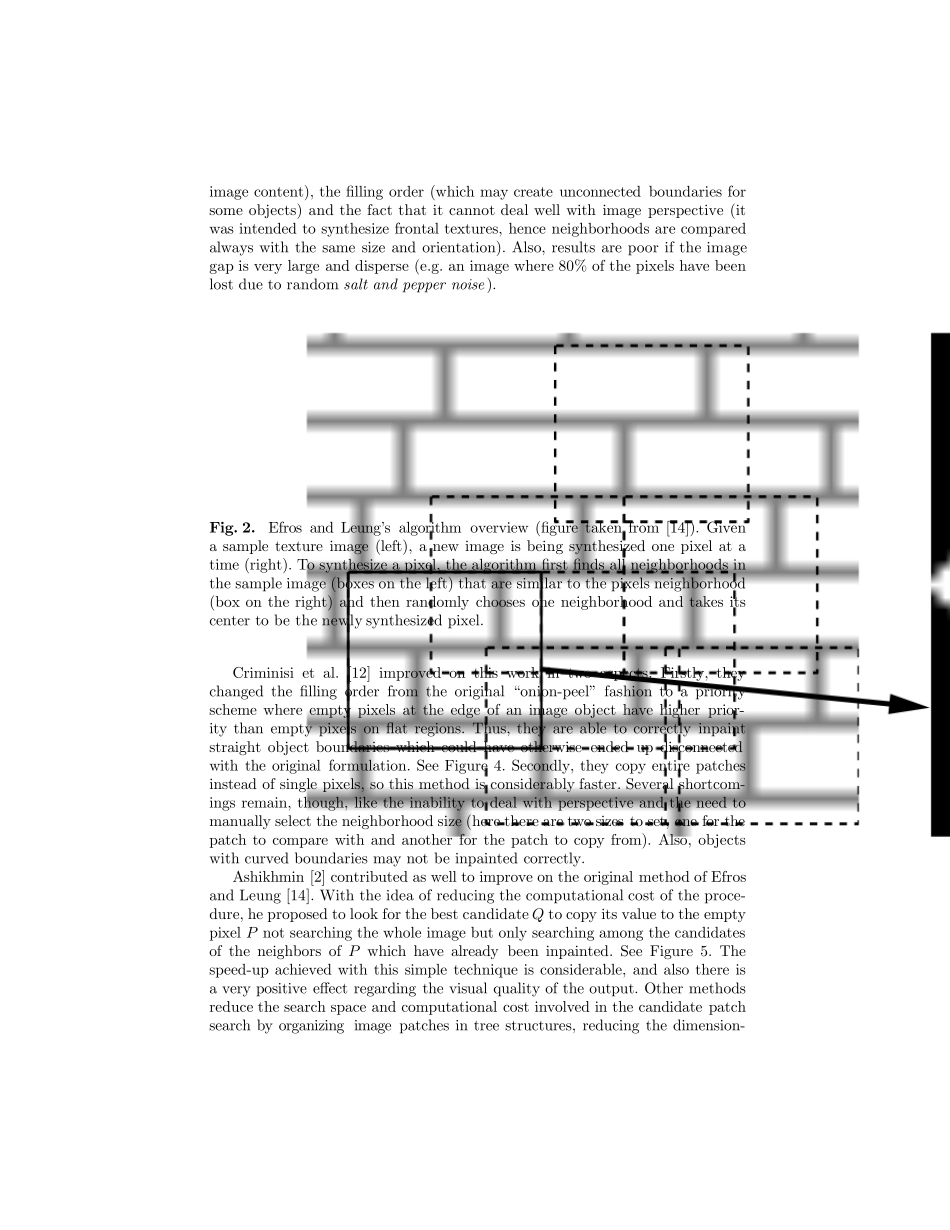InpaintingMarcelo Bertalm´ıo, Vicent Caselles, Simon Masnou, GuillermoSapiroSynonyms– Disocclusion– Completion– Filling-in– Error concealmentRelated Concepts– Texture synthesisDefinitionGiven an image and a region Ω inside it, the inpainting problem consistsin modifying the image values of the pixels in Ω so that this region does notstand out with respect to its surroundings. The purpose of inpainting might beto restoredamagedportions of an image (e.g. an old photograph where folds andscratches have left image gaps) or to remove unwanted elements present in theimage (e.g. a microphone appearing in a film frame). See figure 1. The region Ωis always given by the user, so the localization of Ω is not part of the inpaintingproblem. Almost all inpainting algorithms treat Ω as a hard constraint, whereassome methods allow some relaxing of the boundaries of Ω.This definition, given for a single-image problem, extends naturally to themulti-image case therefore this entry covers both image and video inpainting.What is not however considered in this text is surface inpainting (e.g. how to fillholes in 3D scans), although this problem has been addessed in the literature.Fig. 1. The inpainting problem. Left: original image. Middle: inpainting maskΩ, in black. Right: an inpainting result. Figure taken from [20].BackgroundThe term inpainting comes from art restoration, where it is also called re-tou ching . Medieval artwork started to be restored as early as the Renaissance,the motives being often as much to bring medieval pictures “up to date” as tofill-in any gaps. The need to retouch the image in an unobtrusive way extendednaturally from paintings to photography and film. The purposes remained thesame: to re...


